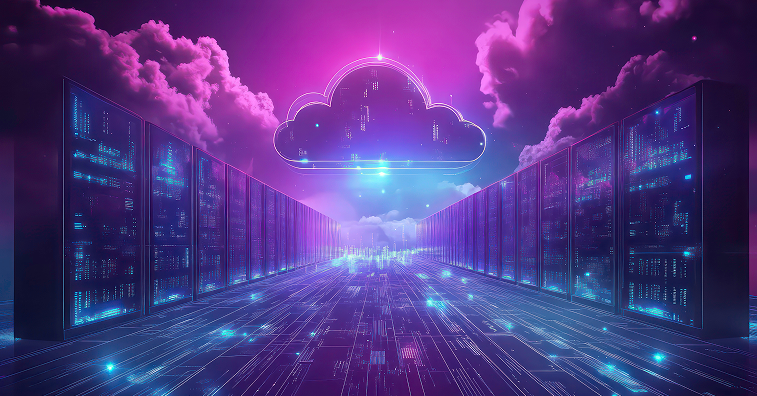- Why Amagi
-
Solutions
Contact UsUse CasesWho We Serve
-
Products
Contact UsCloud ModernizationStreaming TV
-
Resources
Contact UsINDUSTRY REPORTSAmagi FAST Report #14: Navigating the Emerging Distribution LandscapeJanuary 30, 2025Read More
-
Company
Contact UsNewsroomAmagi launches AI-powered Smart Scheduler to improve content programmingApril 3, 2025Read More
Blog
Virtualizing Broadcast Operations with Baskar, CEO & Co-Founder, Amagi
By Amagi - July 7, 2020
Five questions for Baskar, CEO and co-founder, Amagi
What are your observations on the broadcast industry's transition to virtualizing operations?
Virtualizing broadcast operations on a public cloud infrastructure such as AWS has become a key strategy for decision-makers over the last 2-3 years. Every top-tier TV network is implementing a cloud strategy in some measure. Some of the evident trends as I see them are:
- New business models are taking shape
The traditional 5-year business models where TV networks invested in large facilities, hardware equipment and satellite distribution infrastructure involving high capital expenditure to launch channels and run broadcast operations are no longer viable. Cloud is leading the shift to an OPEX-based business model. It gives you flexible ‘pay as you go’ options! - Cloud is no longer for storage only
The media and entertainment industry had initially looked at a cloud infrastructure for content storage and archival. However, with the advancements in cloud technology, the entire broadcast workflow can be automated on the cloud. This means that content preparation, scheduling, graphics, playout, distribution, monitoring and monetization can all be managed on the cloud delivering broadcast-grade quality and viewing experience. - Integrate and manage distributed workflows
As broadcast operations get virtualized, it’s no longer a necessity for all functions in a broadcast workflow to be co-located. Cloud gives the flexibility for teams to access the systems from any remote location and manage workflows. This is leading to optimizing real-estate costs and better space utilization. - Collaboration for specialized skills
Virtualization has opened the doors to collaborating with specialists from any part of the world. Broadcasters can now access a large talent pool and put together teams with specialized skills for any activity from any location. - Address broadcast and streaming TV requirements with a common infrastructure
As many traditional Pay TV networks begin to dabble with streaming TV opportunities, virtualizing broadcast infrastructure is bringing enhanced flexibility and efficiencies to content distribution. With cloud, there is no need to invest in separate infrastructure to launch linear OTT channels. - DR as stepping stone to cloud adoption
Several large broadcasters are replacing their expensive brick-and-mortar backup infrastructure with on-demand cloud-based systems. A natural follow-up to such a transition is the virtualization of the entire primary broadcast infrastructure.
What are the big benefits of moving on to a cloud infrastructure?
Cloud infrastructure is inherently agile and comes with a shorter deployment time. The biggest contribution in my view is the rapid democratization of content, that has been largely ushered in by the power of cloud. Moreover, there are several major benefits that cloud infrastructure provides to broadcast and media companies.
- Cloud is very cost-effective, and gives superior control on budgets and resources
- Gives flexibility to scale and contract operations as per business dynamics
- Provides access to operations from any remote location. No need to be physically located within the broadcast premises
- Provides best-in-class security and redundancy capabilities
- Facilitates seamless integration with other cloud-based software and AI tools to enrich broadcast workflows
- Supports live events production and broadcast with low latency and on-demand infrastructure
- Distribute content to any location, any device through IP-based delivery
- Spin up short-duration pop-up channels to test audience response, leverage special events, promotions, holidays and festivities
In the era of COVID pandemic, has cloud made all the difference?
The COVID pandemic has certainly accelerated cloud adoption in the broadcast industry. We are in a situation where personnel have limited access to broadcast premises. In many cases, due to lockdowns and facility sanitization exercises, the physical facilities are off-limits. Broadcasters till now planned for natural disasters and infrastructure downtime. This is a very unique and real situation where the need of the hour is secure remote access at the safety and comfort of individual homes.
Cloud has been a life-saver in this context. Many of our customers across the world could continue their operations uninterrupted. They are able to open up their secure browsers and have a bird’s eye view on the status of their playout and delivery operations, content monetization with all the reports and analytics, exactly the same way they could see during pre-pandemic days. I believe COVID pandemic has taught us that moving to a cloud-based infrastructure for all the media and entertainment operations is an extremely important step that we need to take forward as an industry.
Should cloud infrastructure be thought of only in the context of business continuity?
As I discussed earlier, cloud infrastructure is at the cutting-edge of broadcast technology and stands to have its impact on all the facets of broadcast business operations and workflows. TV networks can orchestrate live events, operate channels, monitor playout operations, create channel programming, upload content, monetize linear streams and VOD assets, and everything else you can imagine remotely using platforms like Amagi. What I would like to say is, cloud has ensured that it is business as usual for us, even with the constraints of the COVID pandemic and business continuity is an important part of a diversified offering that we have to offer to the industry.
To what extent can broadcast operations be monitored remotely?
From a monitoring standpoint, we are looking at all the systems, subsystems, and endpoint handoff equipment in case of traditional broadcasters. In this case, we can keep the need for human intervention to a bare minimum. On the other hand, our customers can monitor 100 percent of broadcast operations remotely as we have introduced various monitoring workflows to do QC and asset validation. As a lot of assets that are integrated into the system for playout come from multiple sources and locations, we deploy look-ahead playout using our cloud infrastructure to validate the entire linear stream in advance and monitor the same for inconsistencies and anomalies. Look-ahead playout is a classic example of how we leverage AI and machine learning to remotely monitor channel feeds before the actual playout.
In the streaming TV segment, we work with content owners and OTT platforms across the globe to create a global supply chain for thematic content management and packaging, content delivery to multiple platforms, and content monetization. As this ad-supported business model thrives on in-stream ad insertion for monetization, we deploy cloud infrastructure to achieve 24x7 remote monitoring of playout, channel distribution, server-side ad insertion (SSAI), ad performance and analytics and the overall broadcast workflow.
In conclusion, I would say that owing to current business climate, the broadcast industry needs to innovate to survive the downturn, create new revenue models and respond to market dynamics in an agile manner. For that, the transition to cloud is an irreversible change - A new reality.
Related Blogs
Get Started
Increase revenue and reach with our Broadcast & Streaming solutions.
Channel creation. Content distribution. CTV monetization.





